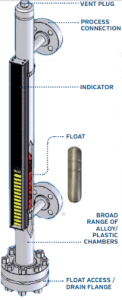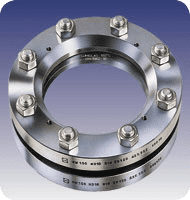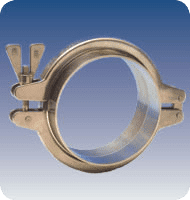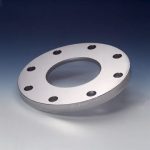The Top 5 Questions to Ask Regarding Sight Glass Lighting
Posted on December 20, 2019 by LJ Star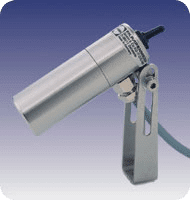 Since the interior of your vessels and pipelines are often too dark for you to see through a sight glass, exterior lighting must be used to illuminate the important stages of your systems. Typical flashlights aren’t powerful enough and often create distracting glares on the sight glass. That’s why mounting lights, or luminaires, must be affixed to your equipment if you want to accurately look through a sight glass and monitor your systems.
Since the interior of your vessels and pipelines are often too dark for you to see through a sight glass, exterior lighting must be used to illuminate the important stages of your systems. Typical flashlights aren’t powerful enough and often create distracting glares on the sight glass. That’s why mounting lights, or luminaires, must be affixed to your equipment if you want to accurately look through a sight glass and monitor your systems.
Sight glasses are useful to help keep your systems running at peak efficiency. Often referred to as view ports, they can show you the levels of liquids or gases that are running through a critical point of your design, help monitor pressure changes, and virtually anything else that a window into your equipment would allow you to do. While they certainly have a place in your designs, inadequate lighting can render them ineffective. You simply can’t perform quality visual inspections without proper lighting. Period.
Finding the Right Lighting
Mounted lights provide an external light source that can illuminate a vessel and the contents within your system. From traditional halogen lights to new LED lighting solutions, there are a number of lights to choose from when looking to illuminate your processes. Picking the right type of light for your specific requirements and operating conditions is critical to getting the most out of your lighting… and your sight glass.
Here at L.J. Star, in order to identify the appropriate light for your application, we always recommend you ask the following questions regarding your lights:
- How much illumination do I need?
- Will the light require continuous use?
- How should the light be mounted?
- Is an explosion-proof rating required?
- What’s my required NEMA rating?
When determining how much illumination is needed for your process, the factors to consider are the vessel’s depth, the total viewing area, and the characteristics of any materials being viewed. Depth is primarily going to be about viewing distance, which is to say how far down below the sight glass itself you need to be able to view the contents of your vessel. You also need to consider if the viewing distance changes significantly between a full and empty vessel. The deeper down you have to go, the more light that’s required for your application. Do you need a wide viewing area to be able to see everything essential in your process, or can a narrow view prove just as effective? Larger views require higher levels of illumination, so they should only be used when necessary. For any materials being viewed, keep in mind that light colors need less light, while dark colors require more. If you’re trying to observe residue buildup, then more light may be needed. If you’re trying to inspect for the presence of foam on your materials, you’ll probably need a wider angle and more light.
For the required wattage of your light, there are two main considerations: the reflectiveness of your materials and the distance your light is from the target. If your vessel has a polished interior that’s reflective, lower wattage lights can be used compared to the dark surface of a glass-lined vessel that absorbs light. The following figure shows the minimum recommended wattage that your bulbs should be based on their distance from the application:
Beyond just distance from the target, you also need to figure out how your light will be mounted. Mounting configurations can range from a “half-moon” style configuration that fits a welded sight port to lights that can be put directly on sanitary fitting for one-piece sanitary ferrule mounting. Mounting brackets are the most common way to add on a light to an existing sight glass, allowing you to mount a light directly to the retaining flange. If your sight glass is too small to view and light using a standard light, fiber optic lights are recommended. These can be mounted at a distance, making them great for tight spaces or moving the light away from any vibrations or throttling equipment that could damage the bulb’s filament, reducing bulb life.
It’s common for your processes to take place in hazardous environments where explosive conditions may be present. If you’re dealing with an application that’s prone to explosions, explosion-proof lighting provides an added degree of safety and security to your installations. Different lights will meet different standards set forth by the National Electric Code (NEC) Article 500.
| Frequency | Division | Zone |
| Continuous | Class 1, Division 1 | Zone 0 |
| Intermittent Periodically | Zone 1 | |
| Abnormal Condition | Class 1, Division 2 | Zone 2 |
In addition to dealing with the risks of an explosion, there are other environmental hazards that your lights might have to contend with. The National Electrical Manufacturers Association (NEMA) has a classification system for electrical device enclosures, which indicate the level of protection each NEMA rating offers:
- NEMA 7 ratings apply to indoor applications in locations classified as Class I, Groups A, B, C or D as defined in the National Electrical Code (NEC).
- NEMA 8 ratings are for either indoor or outdoor applications in locations classified as Class I, Groups A, B, C or D as defined in the National Electrical Code (NEC).
- NEMA 9 ratings are given to indoor enclosures used in locations classified as Class II, Groups A, B, C or D as defined in the National Electrical Code (NEC).
- NEMA 10 ratings apply to applications covered by the Mine Safety and Health Administration (MSHA).
Once you’ve addressed these critical questions, you’ll have the information that you need to choose the best lighting for your sight glass. Click here to read our blog on how to find the best type of lighting for your sight glass.
If you want to learn more about how different types of light affect your sight-based applications, follow this link to get our lighting handbook.
Subscribe to our Blog
Categories
- Certifications
- Company
- In The News
- Industry Information
- METAGLAS® Sight Glasses
- PackExpo 2020
- Sanitary Clamps
- Sanitary Fittings
- Sight Flow Indicator Benefits
- Sight Glass Applications
- Sight Glass Construction
- Sight Glass Lighting
- Sight Glass Lights
- Sight Glass Process Vessel Camera
- Sight Glasses
- Trade Shows
- Webcast
